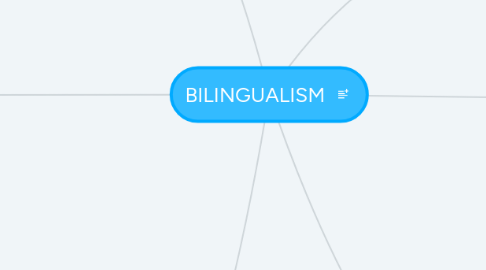
1. Individual Bilingualism
1.1. the use of two (or more) languages by an individual
2. Societal Bilingualism
2.1. the use of two (or more) languages within a given communitythe use of two (or more) languages within a given community
3. Variables in relation to bilingualism
3.1. Degree of bilingualism
3.1.1. Balanced Bilinguals
3.1.2. Dominant Bilinguals
3.1.3. Passive / Recessive Bilinguals
3.1.4. Semilinguals / Limited Bilinguals
3.2. Context of bilingual language acquisition
3.2.1. Primary context / natural bilingualism
3.2.2. Secondary context / school bilingualism
3.2.3. Naturalistic fused setting
3.2.4. Naturalistic separate setting:Naturalistic separate setting:
3.2.5. Elective bilingualsElective bilinguals
3.2.6. Circumstantial bilinguals:Circumstantial bilinguals
3.3. Age of acquisition
3.3.1. Neurological
3.3.2. Aptitudes
3.3.3. Attitude
3.3.4. identity and motivation
3.3.5. nature of exposure
3.4. Domain of use of each language
3.4.1. Interlocutors Topic
3.4.2. Place or Location
3.5. Social orientation
3.5.1. Attitudes of bilinguals toward their bilingual status
3.5.2. Attitudes toward the larger community
3.5.3. Attitudes of the larger community toward them and their bilingual status
3.5.4. status.
